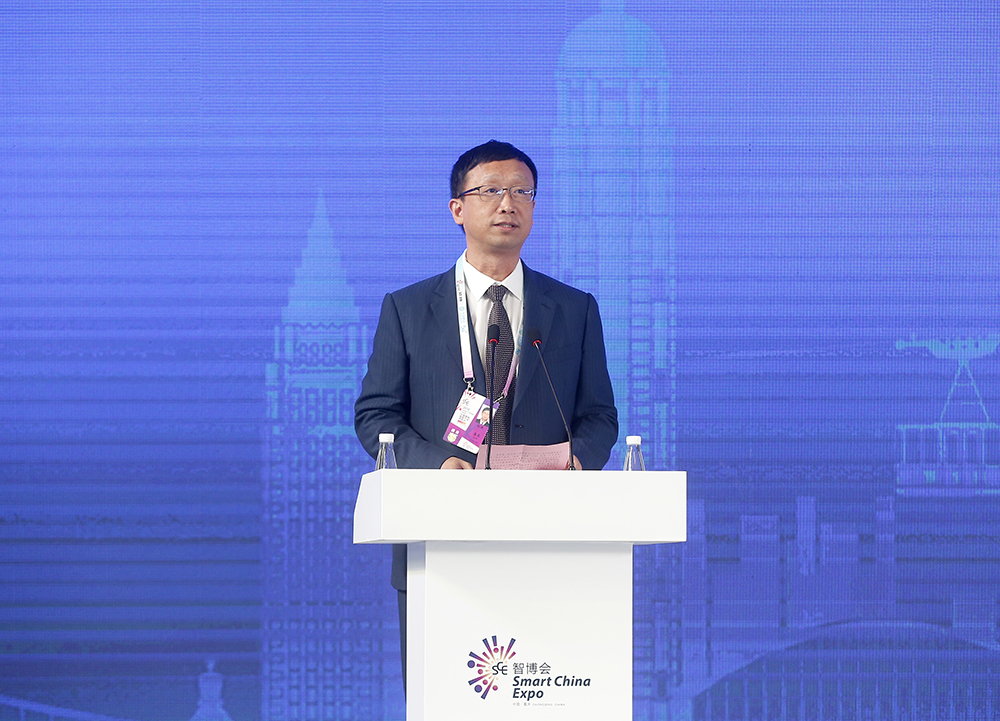On the morning of August 27, the Chongqing Cultural Tourism Big Data Conference commenced at the 2019 Smart China Expo, guided by China Tourism Academy (CTA) and sponsored by Chongqing Municipal Culture and Tourism Development Committee (CMCTDC).

Chongqing Cultural Tourism Big Data Conference
Liu Qi, Director of CMCTDC, welcomed leaders and experts in attendance and introduced the achievements of Chongqing’s cultural tourism industry development and smart cultural tourism in recent years. Dai Bin, President of CTA, made a keynote speech, affirmed the achievements made in the development of Chongqing’s cultural tourism industry and guided the discussion to areas of growth for intelligence and big data for Chongqing’s cultural tourism industry.

Liu Qi, Director of CMCTDC, delivered a speech
At the conference, CMCTDC released the achievements of Chongqing’s cultural tourism industry in the past three years in the form of a short video. CTA gave a series of interpretations on night tourism. Chongqing Branch of Data Center of the Ministry of Culture and Tourism of the PRC published the relevant research achievements on urban tourism in Western China.
The nightlife is popular, youth from the ’80s are the most active at night
The data shows that the consumption of urban tourism is constantly upgrading. In 2018, the proportion of high-net-worth customers was increased by 1.75 percentage points compared with 2016, and the upgrading trend of tourism consumption was highlighted.
Among them, tourism night consumption is popular, and the “80s” become the market leader. In 2018, the amount of night consumption in western urban tourism accounted for 23% of the whole day. Night tourism has become an important channel for tourists to perceive local culture and experience the local lifestyle. From the perspective of the crowd structure, the post-80s tourists spent the most active night consumption, and the consumption amount and the number of people occupied more than 35%. In addition, cultural consumption has grown significantly, consumption in museums, art galleries, and science and technology museums has climbed, and the amount and number of people in the western urban cultural venues have increased by 14% and 33% respectively.
Western urban tourism will continue to grow rapidly
According to statistics from various places, between 2014 and 2018, the number of urban tourist receptions in the capital cities of the western region continued to rise, with an average annual growth rate of 16% in five years and average annual growth of 25% in reception revenue.
In 2018, there were 6 cities in the west and 12 cities receiving more than 100 million domestic and foreign tourists. Among them, Chongqing, Chengdu, and Xi’an received more than 200 million visitors. Among the 12 cities in the west, 5 urban tourism revenues have reached more than 200 billion yuan.
The short video broadcasting effect continues to show the unique charm of the western city. Judging from the amount of video playback, there are 11 cities with more than one million explosions. The broadcasts of short videos in Chongqing, Xi’an, and Chengdu occupy the top three in the country, and Chongqing is the only city in the country with a broadcast volume of 10 billion.
Recent years have seen rapid intelligent development and preliminary gains in Chongqing’s cultural tourism. Many tasks, such as the pilot demonstration of smart tourism scenic areas and shared access and analytical applications of big data, have been carried out in an orderly manner. Information technology has been used in cultural tourism scenes. In the future, Chongqing will devote itself to adapting to the requirements of high-quality development. In the construction of essential information resources, the city will further improve the information sharing and perfect the industry standards, norms, and the management mechanism with a goal of building a more comprehensive and efficient smart cultural tourism network system and upgrading of cultural tourism products, necessary supporting facilities, management services, and advertising and marketing.


